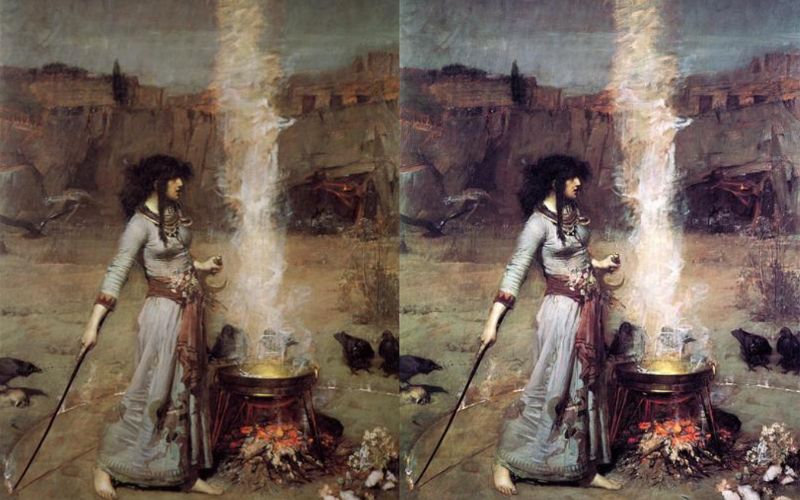John William Waterhouse produced The Magic Circle, an oil painting in the Pre-Raphaelite style, in 1886. In order to establish a space for rituals, the picture shows a witch or sorceress tracing a fiery magic circle on the ground.
After Consulting the Oracle and St. Eulalia, The Magic Circle was Waterhouse’s third exhibition with a supernatural theme in as many years when it debuted at the Royal Academy in 1886.
The artwork was well received during its show and was acquired by the Tate Gallery through the Chantrey Bequest for £650 the following year. Both the audience and the critics praised the painting highly.
The main character is a lone, feminine figure who is positioned in the middle of the canvas in a manner typical of Waterhouse’s work.
The surrounding scenery is intentionally blurry, giving the impression that it isn’t quite genuine, and the figures in the background can only be seen with great difficulty, guaranteeing the witch is the only significant image.
In order to balance the circle the figure is drawing around herself, Waterhouse carefully considered the angles used in this piece. Her straight arm, extended by the straight stick, was held out at a 25-degree angle to her upright body.
The witch’s determined face, omission of the ravens and frog, two common emblems of magic, and control over the smoke pillar highlight her strength.
It stays in a straight line and neither puffs out nor is influenced by the wind. The female is wearing an ouroboros made out of a live snake.
The Magic Circle shares elements with Waterhouse’s later painting Miranda (1916), which also features a woman connected to magic. The witch has a dress that resembles Miranda’s, and we can only see the witch’s profile of her face.
In contrast to Frederick Sandys’ depictions of sorceresses, such Medea (1868) and Morgan le Fay (1864), Waterhouse made the decision to make his witch’s face purposeful and intriguing rather than evil.
The themes of miracles, sorcery, and the influence of prophesy recur frequently in Waterhouse’s work. More particularly, the idea of a woman as an enchantress recurs in pictures like Hylas with the Nymphs (1891, Oldham Art Gallery) and Circe Offering the Cup to Ulysees (1891, Oldham Art Gallery) (1896, Manchester City Art Gallery).
His body of work also includes a number of Middle Eastern subjects, where he drew less on personal experience and more on the works of contemporary artists like J.F. Lewis (1805-76) and Lawrence Alma-Tadema (1836-1912). It exhibits Waterhouse’s preoccupation with the exotic and is one of his earlier works.


